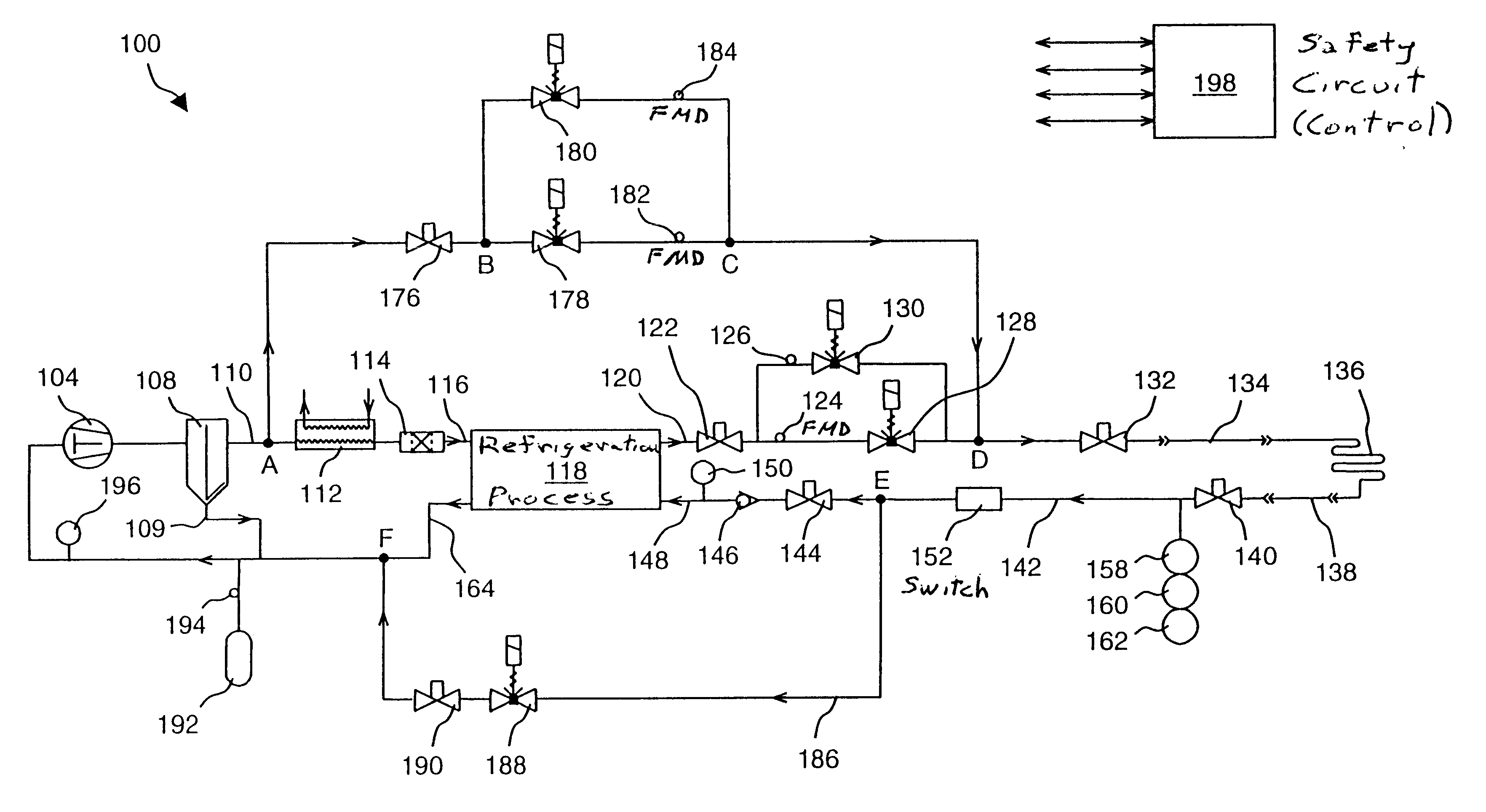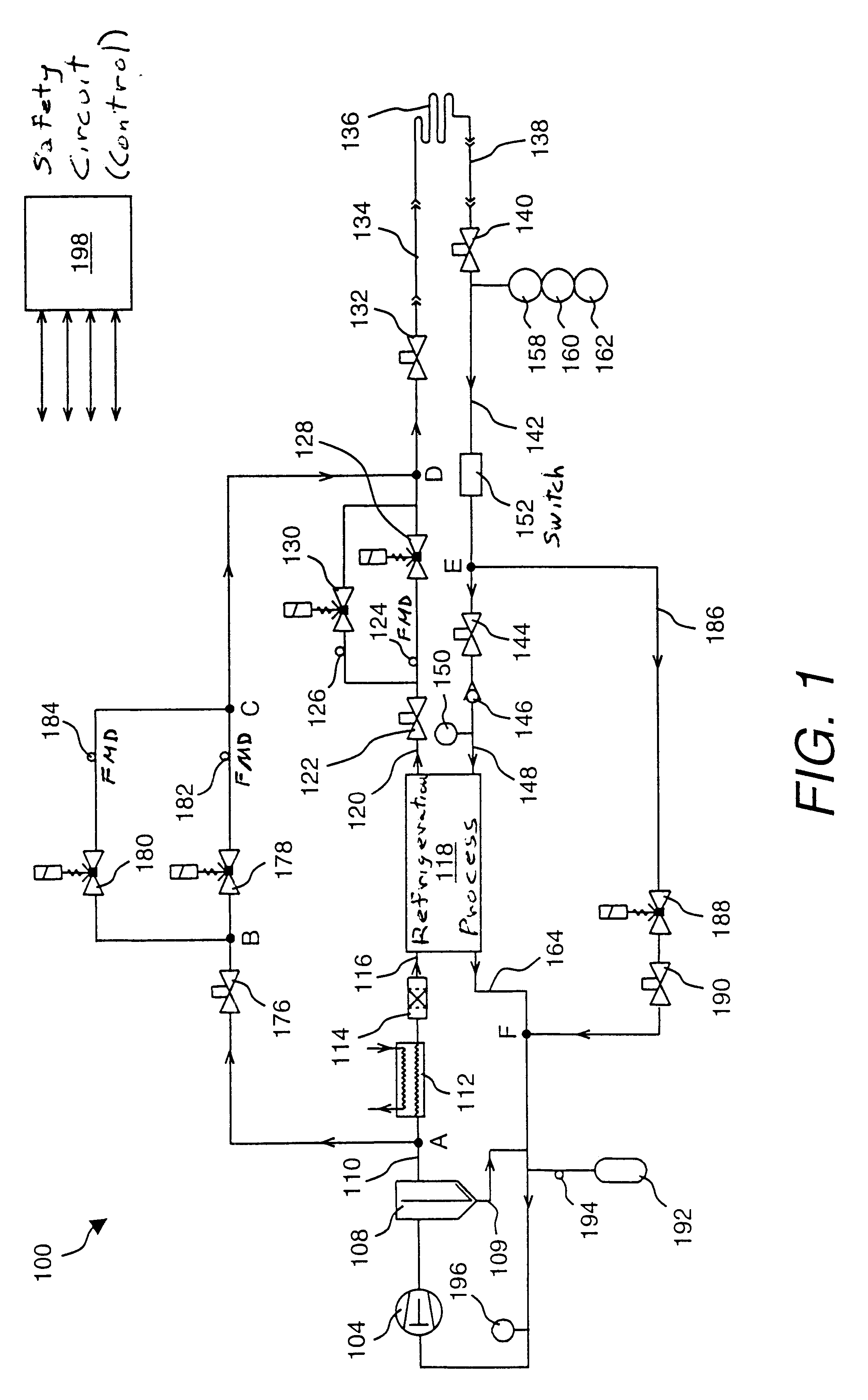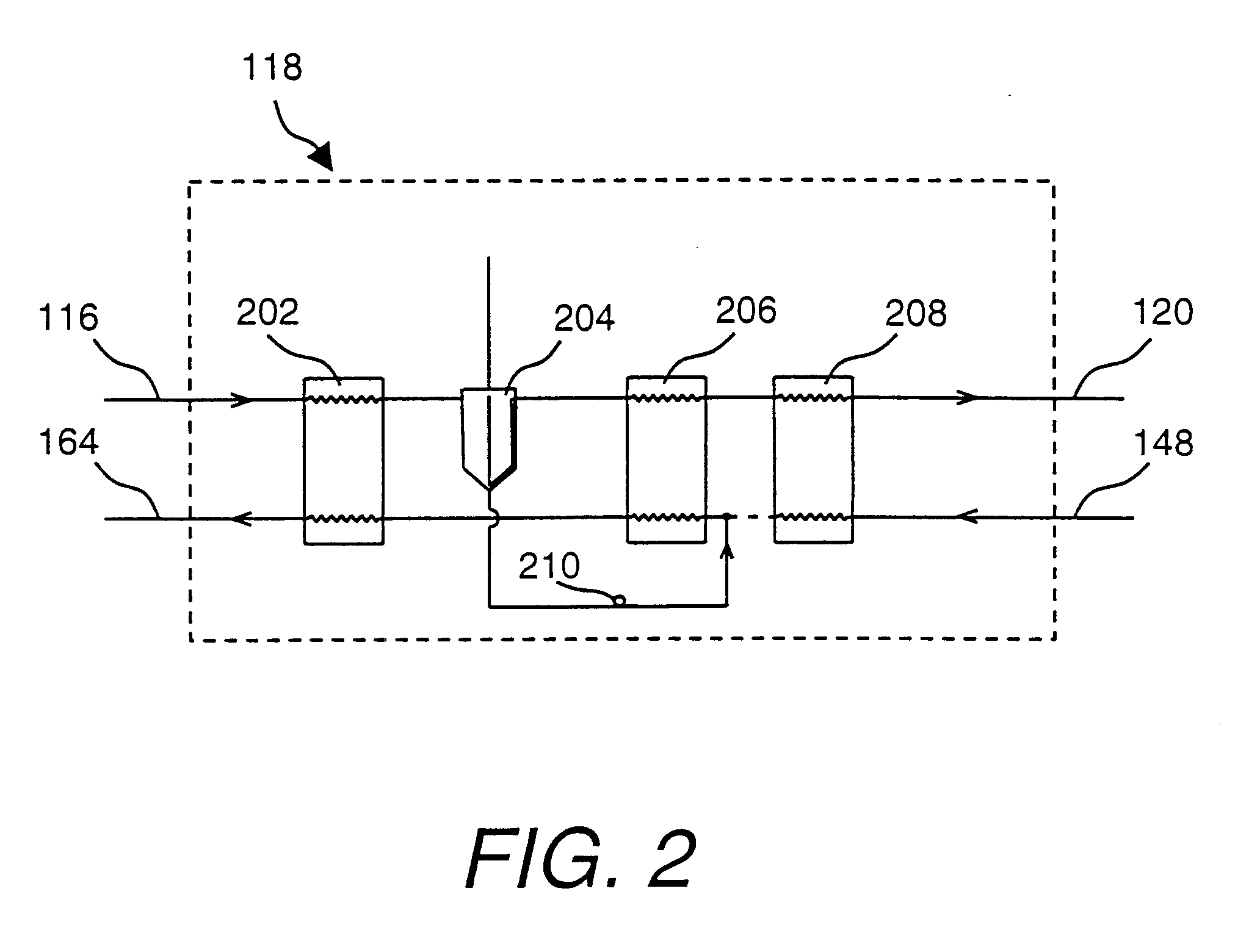Very low temperature refrigeration system with controlled cool down and warm up rates and long term heating capabilities
a refrigeration system and low temperature technology, applied in the direction of defrosting, domestic cooling apparatus, application, etc., can solve the problem that the defrost return bypass is never allowed, and achieve the effect of shortening the recovery period and reducing the total processing tim
- Summary
- Abstract
- Description
- Claims
- Application Information
AI Technical Summary
Benefits of technology
Problems solved by technology
Method used
Image
Examples
embodiments 2 through 6
that follow in description indicate variations in accordance with the invention of refrigeration system 100 pertaining to the defrost bypass return function.
In a second embodiment (not shown), an additional heater or heat exchanger is placed (FIG. 1) in bypass line 186 between node E and bypass valve 188. This additional heater or heat exchanger provides further refrigerant temperature control such that the refrigerant temperature in bypass line 186 is prevented from being colder than the operating limits of bypass valve 188 and / or service valve 190. The heat exchanger could exchange heat with any other process flow, including cooling water. In the case of cooling water, it must be controlled such that the water does not freeze.
In a third embodiment (not shown), instead of using standard 2 position (open / closed) valves or proportional valves (FIG. 1) for bypass valve 188 and service valve 190, valves that are rated for cryogenic temperatures are used for bypass valve 188 and service...
sixth embodiment
This sixth embodiment is preferred over the fifth embodiment, as it makes use of existing heat exchangers. This embodiment of refrigeration system 300 does not need the additional heater or heat exchanger of the fifth embodiment.
This arrangement of valves can also be used during the cool down process after the completion of defrost. By delivering the returning refrigerant to a part of refrigeration process 118 that is similar in temperature, the heat load on refrigeration system 100 is reduced. This permits a more rapid cool down of evaporator coil 136 than in FIG. 1 without valves 302, 304 and 306.
embodiments 7 through 14
that follow indicate variations of refrigeration system 100 pertaining to the normal defrost supply function.
FIG. 4 (seventh embodiment) illustrates a variation of the defrost supply loop of refrigeration system 100. In this embodiment, refrigeration system 400 of FIG. 4 includes an additional heat exchanger 402, which is inserted in line between nodes C and D. Heat exchanger 402 is a conventional heat exchanger or heater.
In some applications, there is a need for the refrigerant feeding customer-installed evaporator coil 136 to be at a specific minimum elevated temperature. However, defrost valve 178, defrost valve 180, and their associated FMDs 182 and 184 cause the refrigerant temperature to drop, due to expanding gas. As a result, the temperature of the refrigerant feeding evaporator coil 136 drops, typically by about 10.degree. C. To compensate, heat exchanger 402 is inserted between nodes C and D to reheat gas. If heat exchanger 402 has no controls: it simply exchanges heat bet...
PUM
 Login to View More
Login to View More Abstract
Description
Claims
Application Information
 Login to View More
Login to View More - R&D
- Intellectual Property
- Life Sciences
- Materials
- Tech Scout
- Unparalleled Data Quality
- Higher Quality Content
- 60% Fewer Hallucinations
Browse by: Latest US Patents, China's latest patents, Technical Efficacy Thesaurus, Application Domain, Technology Topic, Popular Technical Reports.
© 2025 PatSnap. All rights reserved.Legal|Privacy policy|Modern Slavery Act Transparency Statement|Sitemap|About US| Contact US: help@patsnap.com



